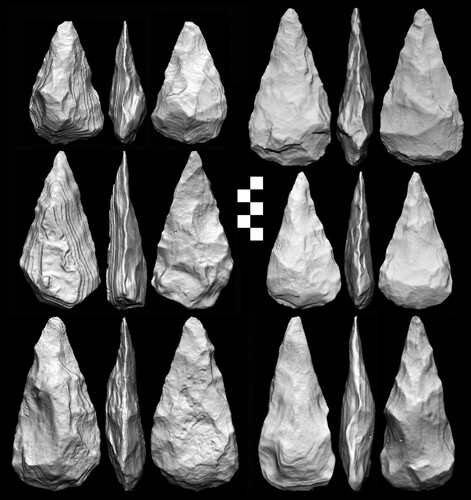ABSTRACT
This study examines parameters, causes, and spatio-temporal patterns of handaxe shape variation from Tabun cave in the Levant, and Khall Amayshan 4B and Khabb Musayyib in northern Arabia. These assemblages span the range of most pointy to most rounded handaxes found anywhere during the Acheulean. The AGMT3D program is used to conduct high resolution geometric morphometric analysis of handaxe form from 3D models. Shape variation is tested against blank type, allometry, and reduction intensity. None of these factors appears to be a strong influence, but there are significant assemblage-wise differences in form, suggesting the different shapes were intentionally produced. The analysis quantifies a pattern of high diversity in the assemblages from Tabun versus low diversity in the shorter occupations at the Arabian sites. We suggest possible explanations of emerging specificity in utilitarian functions, as well as the manifestation of social identities in artefacts at the end of the Acheulean.
Introduction
Handaxes are the quintessential Lower Palaeolithic shaped tool, with their relatively long production sequences and preferential curation suggesting that they held particular importance for the hominin groups who used them. Their shapes are influenced by several incidental factors (Nowell, Citation2002), including the type and clast form of the rock on which they were made (Jones, Citation1979; White, Citation1998); their mode of production (Herzlinger et al., Citation2021; Leakey & Roe, Citation1995); ergonomic size constraints (Gowlett & Crompton, Citation1994; Noll, Citation2000); and the extent to which they were resharpened (McPherron, Citation2006; Shipton & Clarkson, Citation2015b). However, these variables do not offer a complete explanation of handaxe variation (Eren et al., Citation2014; Shipton & Clarkson, Citation2015b), not least because handaxe shapes were limited by the skill of the knapper (Herzlinger et al., Citation2017; Shipton, Citation2018), and were part of a cultural tradition (Shipton, Citation2020; Wynn & Gowlett, Citation2018), with variations of form according to the particular groups who made them (García-Medrano et al., Citation2018; Shipton & White, Citation2020; White et al., Citation2019). Increasing levels of knapping skill may have allowed hominins greater control over biface shape in the late Acheulean (Garcia-Medrano et al., Citation2022; Saragusti et al., Citation2005; Shipton, Citation2016). Paradoxically though, increased control of form does not necessarily lead to increased standardization, with increased handaxe heterogeneity recognized at many sites at the end of the Acheulean (Hosfield & Chambers, Citation2009; Jagher, Citation2016; Li et al., Citation2018). One possibility is that late Acheulean knappers were less skilled than their predecessors (Herzlinger et al., Citation2021) and therefore incidental factors such as initial forms and reduction intensity had a greater impact on the form of the artefacts at the point of discard. An alternative is that the diverse forms were intentionally produced and reflect either cultural (Hosfield & Chambers, Citation2009) or functional (Zupancich et al., Citation2021) heterogeneity. To explore the causes of handaxe diversity at the end of the Acheulean, this paper tests for correlates of handaxe shape from three late Acheulean sites from southwest Asia: Tabun cave in the Levant, and Khabb Musayyib (KM-2) and Khall Amayshan 4B (KAM-4B) in the western Nefud desert of northern Arabia.
Tabun cave is located in the limestone Mount Carmel near the Mediterranean coast of the southern Levant. It is a double-chambered, high-roofed cave measuring approximately 18 × 20 m in maximum horizontal extent, with a remarkable sequence of Palaeolithic occupation over 16 m deep. This sequence includes occupation at the end of the Acheulean spanning 6 m of deposit which represents over 200,000 years (Shimelmitz et al., Citation2020). The density of occupation and repeated evidence for the use of fire (Shimelmitz et al., Citation2014) suggests the site was used a home-base (Kuhn et al., Citation2017). Tabun has one of the most diverse handaxe assemblages in the world, with one study recognizing 12 different sub-types at the site (Gisis & Ronen, Citation2006). Handaxes from Tabun were made on flint with tabular slabs, rounded cobbles, and large flakes all used as blanks, as well as occasional recycling of older patinated handaxes to make new ones (Shimelmitz, Citation2015), a feature of the Acheulo-Yabrudian more generally (Agam et al., Citation2020).
Late Acheulean occupation at Tabun Garrod Layer F underlies Jelinek Unit XIV from which a date of 415 ± 27 ka (Marine Isotope Stage (MIS) 11) was obtained (Mercier et al., Citation2000). Handaxes from Layer F are typical of the regional late Acheulean, being small (Gilead, Citation1970), generally of the usual cordate handaxe form but with some more oval pieces (Gisis & Ronen, Citation2006), and having high levels of symmetry and outline regularity (Saragusti et al., Citation2005) ().
Figure 1. Handaxes from Tabun Layer F. Top left is made on a slab, top right and bottom left are made on cobbles, and the blank type for the bottom right is unknown.
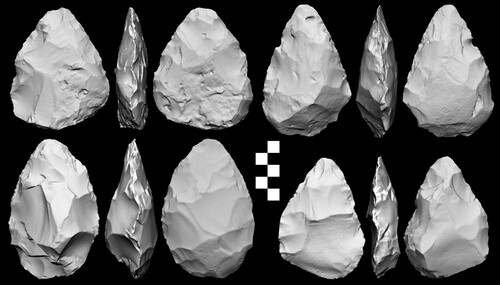
Overlying Layer F, are Garrod Layers Ed and Ec, containing the early manifestation of the regional Acheulo-Yabrudian industry with corresponding dates of 302 ± 27 and 324 ± 31 (MIS 9) (Mercier & Valladas, Citation2003). The Acheulo-Yabrudian is characterized by an inter-stratification of handaxe (Acheulean facies), Quina scraper (Yabrudian facies), and blade (Amudian facies) focussed lithic industries (Barkai & Gopher, Citation2013), with a general reduction in handaxe frequency relative to retouched flakes (Jagher, Citation2016). A wider variety of handaxe shapes are evident in these layers, including more rounded pieces and cleaver-like forms (Gisis & Ronen, Citation2006; Matskevich, Citation2006; McPherron, Citation2003) (). The Acheulo-Yabrudian industry continues into Garrod Layers Eb and Ea (Jelinek Units XI-IX) from which dates of 264 ± 28, 267 ± 22, and 256 ± 26 (MIS8) have been obtained (Mercier & Valladas, Citation2003; Shimelmitz et al., Citation2020). Extremes of handaxe form are evident in this assemblage including several very pointed pieces (Gisis & Ronen, Citation2006) as well as very rounded ones ().
Figure 2. Handaxes from Tabun Layer Ed. All specimens are made on cobbles except for the bottom left which is made on an old biface.
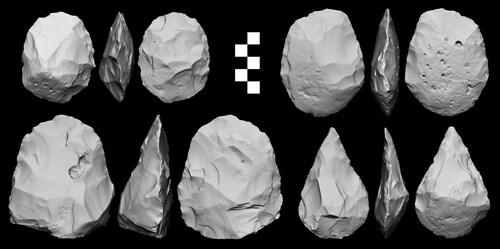
Figure 3. Handaxes from Tabun Layer Eb. The top left specimen is made on a slab, the bottom left is made on a flake, and the two on the right are made on cobbles.
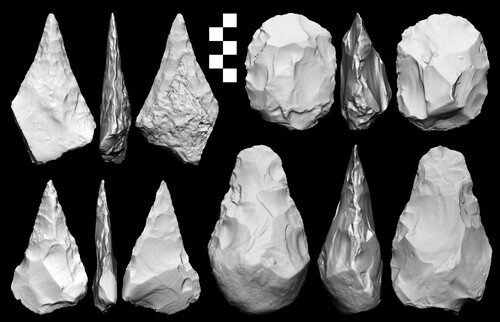
In the western Nefud desert, 675 km south-southeast of Tabun, surface handaxe assemblages have been recovered in association with palaeolake deposits at several open-air sites including An Nasim, Khabb Musayyib (KM2), and Khall Amayshan (KAM4) (Breeze et al., Citation2017; Groucutt et al., Citation2021; Scerri et al., Citation2015; Scerri et al., Citation2021) (). There are no Quina scrapers or any systematic blade production associated with these Nefud assemblages so they cannot be said to belong to the Acheulo-Yabrudian sensu stricto. An Nasim is dated to 310 ± 17 ka (MIS9), approximately contemporary with Layer Ed at Tabun (Scerri et al., Citation2021). It is also similar to Tabun in exhibiting a high diversity of handaxe forms, with pieces ranging from very pointed to very rounded. The smaller assemblages of Khall Amayshan and Khabb Musayyib provide some comparison with both An Nasim and the Acheulo-Yabrudian levels of Tabun in the extreme levels of pointiness of the handaxes, but are distinct in not being accompanied by rounded and cleaver-like pieces (Groucutt et al., Citation2021) (). Khall Amayshan Assemblage B in particular exhibits uniformity in its pointed handaxes (). The Tabun, Khabb Musayyib, and Khall Amayshan assemblages are also distinguished from older assemblages in southwest Asia, and indeed the Acheulean world more widely, by the small size of the handaxes (Gilead, Citation1970; Gisis & Ronen, Citation2006; Groucutt et al., Citation2021).
Figure 4. Khall Amayshan 4 showing the different palaeolake deposits from which artefacts have been recovered. Assemblage B is from the MIS9 NE Lake. Palaeolake deposits exposed in interdunal depressions are typical for the West Nefud Palaeolithic sites. Upper photograph credit - Paul Breeze, lower photograph credit - Michael Petraglia.
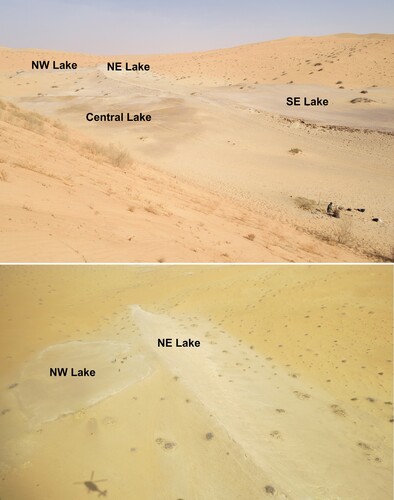
Figure 5. Handaxes from Khabb Musayyib. The top left specimen is ferruginous sandstone, the top right is chert, and the bottom two are quartzite.
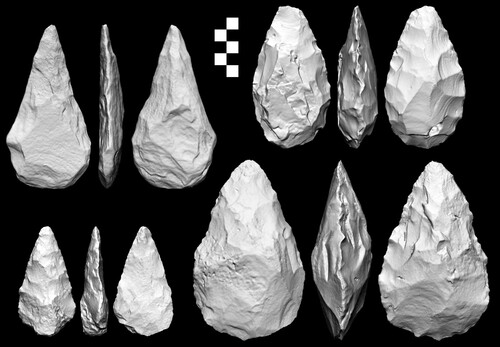
Khall Amayshan 4B is associated with a palaeolake deposit bracketed by luminescence age estimates of 337 ± 39 and 306 ± 47 ka (MIS 9) (Groucutt et al., Citation2021) (). Hippopotamus fossils from the same palaeolake as the handaxes suggest it was a permanent waterbody at the time of hominin occupation (Groucutt et al., Citation2021). The Khabb Musayyib occupation remains undated, but given that windows of opportunity for Acheulean hominins to live in Arabia were likely restricted to inter-glacials and the known occupation history of Khall Amayshan 50 km to the east-northeast (Groucutt et al., Citation2021), it is likely that Acheulean hominins inhabited the site in either MIS9 or MIS11. The Khabb Musayyib specimens include one chert piece, but are otherwise made on (meta)quartzite and ferruginous sandstone (orthoquartzite), the latter outcropping as horizontally bedded slabs adjacent to the palaeolake deposits at the site (Scerri et al., Citation2015) (see Groucutt et al. (Citation2017) for a discussion of knapped rock types in the region). The Khall Amayshan 4B pieces are exclusively made on slabs of ferruginous sandstone, the nearest known outcrop of which is just over 10 km from the site.
The majority of artefacts associated with the palaeolake deposits at Khabb Musayyib are handaxes (N = 40), with the remainder comprised of cores (N = 6), retouched flakes (N = 4), and unretouched flakes (N = 4), two of the latter being biface thinning flakes (Scerri et al., Citation2015). Some additional handaxes specimens found on the ferruginous sandstone exposures at Khabb Musayyib were also included in this sample. Unlike Khabb Musayyib, Khall Amayshan Assemblage B includes numerous unretouched flakes (N = 245), with the remainder of the assemblage comprised of handaxes (N = 78), retouched flakes (N = 3), and cores (N = 24). Some of the cores and flakes are Levallois (Groucutt et al., Citation2021).
Materials and Methods
Handaxes were randomly sampled from the collections, with pieces excluded from the study if they were seemingly unfinished or had extensive ancient or modern breakages. The Arabian assemblages were collected in 2013 and sampled at Oxford University, but are now housed in the Saudi National Museum in Riyadh. From Khall Amayshan 4B, 26% of handaxes were scanned, and from the Khabb Musayyib assemblage 30% were included, though the assemblage totals include the broken and unfinished pieces. Tabun cave handaxes were sampled from collections excavated by Dorothy Garrod in 1934 and 1936 which are held in the Cambridge Museum of Archaeology and Anthropology, the British Museum, and the Institute of Archaeology (UCL), with approximately 50% of available specimens included. As layers Ea and Eb are similar in age, handaxes from these were combined into a single sample.
Three-dimensional models of the handaxes were created using a NextEngine laser scanner. These models were converted into VRML files and processed in the program AGMT3D (version 3.01), bespoke software designed for the geometric morphometric analysis of Acheulean bifaces (Herzlinger & Grosman, Citation2018). Geometric morphometrics has the advantage over linear metric measurements of maintaining the relationship between multiple different points (landmarks) on an object in the same shape space. It has been used for the study of handaxes for the last two decades; initially on single surfaces (Lycett et al., Citation2006), then on whole artefacts (Shipton, Citation2008, Citation2013). The advent of automatic landmark positioning with AGMT3D has allowed for orders of magnitude more landmark co-ordinates to be taken on an object enabling more refined assessments of shape (Herzlinger & Goren-Inbar, Citation2020; Shipton & White, Citation2020).
AGMT3D uses an automatic orientation protocol to maximize the outline plan symmetry of the bifaces by minimizing the absolute difference in distance from the centreline between either edge of the biface (Herzlinger & Grosman, Citation2018). This protocol had varying success on these 3D models, with pieces of various shapes oriented “diagonally”. In cases where the deviation from the axis of maximum bilateral symmetry was greater than 5˚ the pieces were rejected. In 25 cases for the present sample the orientation was erroneous, leaving a total remaining sample size of 100. After the automatic orientation protocol, objects were flipped so that the more domed surface on non-flake handaxes (measuring on screen at the tip, middle, and butt in cases of ambiguity) was consistently facing the same way: To the positive side of the Z-axis to maintain consistency with the placing of the ventral side of flake blank bifaces to the negative side of this axis in this and other AGMT3D studies (Herzlinger et al., Citation2021). On both surfaces of the handaxe scans, 2500 3D landmark points were extracted at the intersections of a grid of 50 longitudes and latitudes placed on both surfaces of the artefact along its axis of maximum length in plan view. The resultant .3dl files of the handaxe landmark models are available on the University College London data repository: https://dx.doi.org/10.5522/04/22698517.
After the landmark co-ordinates were extracted, a Generalized Procrustes Analysis (GPA) scaled the point clouds to a unitary size and superimposed them so as to minimize the distance between equivalent landmarks on different artefacts. A Principal Components Analysis (PCA) on the resulting co-ordinate data then determined the principal axes of shape variation in the sample.
In addition to the co-ordinate data, the handaxes were weighed, the number of flake scars >10mm in maximum dimension were counted, and, in the program ScanStudio, scan surface area was measured. These latter variables allowed for the calculation of the Scar Density Index of reduction (Shipton & Clarkson, Citation2015a). For some of the weathered pieces from the western Nefud desert, flake scar boundaries had been obscured so it was not possible to count the number of scars. Where blank morphology was evident this was recorded on all pieces (). Statistical tests were performed in the programs AGMT3D and SPSS. The SPSS file containing the PCA data and non-morphometric data is available on the UCL data repository: https://dx.doi.org/10.5522/04/22698625.
Table 1. Breakdown of the study sample by site and blank.
Results
The PCA extracted 4 components that each explained more than 5% of shape variability. Component 1 accounted for 36.97% of variability and described an axis of variation from pointed (negative values) to rounded forms (positive values) (). PC2 accounted for 11.69% of variability and described handaxe plan asymmetry with negative values skewed left and positive values skewed right. There was no sign of deliberate manipulations of symmetry (Wynn, Citation2000) in the assemblages, therefore we regard this component as reflecting unintentional deviations during knapping and/or deviations within the acceptable error of orientations (5˚) during data processing. PC3 explains 8.51% of variability and relates to profile shape, with negative values being relatively thin and having their maximum thickness around the middle of handaxe length, while positive values are relatively thick and have their maximum thickness towards the butt (). PC4 accounted for 6.1% of variation and appeared to represent the combination of variation seen in PCs 1 and 3, with thick-butted pointed pieces having negative values, and thick-middled rounded pieces having positive values. A previous 3D morphometric study of diverse handaxe form similarly found the main parameters of shape variation to be roundness versus pointedness in plan, and tapering versus balanced in profile (Shipton & Clarkson, Citation2015b).
Figure 7. Scatter plot of PC1 and PC3 for the five study assemblages showing convex hull distributions. The west Nefud assemblage distributions are shown on top of Tabun Ea/b and Tabun F is shown on top of Tabun Ed. The PC1 spectrum models are −350 and +400; the PC3 spectrum models are −150 and +250.
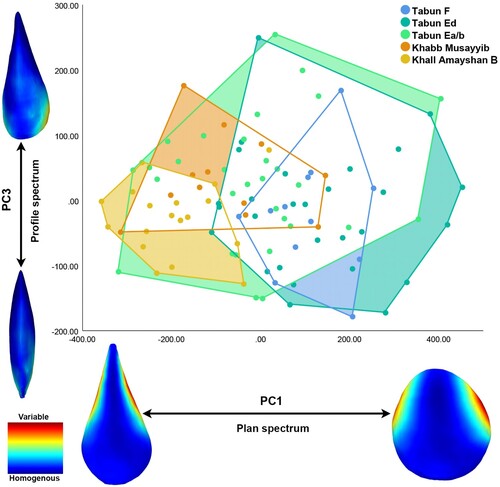
The next stage of analysis was to assess the influence of incidental factors on handaxe morphology. As there was complete separation of materials by site, this dataset was not suitable for statistically testing the influence of rock type. However, we do note that flint pieces from Tabun cover the entire range of the shape spectrum with the highest and lowest values for both PC1 and PC3 (), suggesting that rock type was not an important determinant of shape. Likewise, while our Nefud ferruginous sandstone handaxes were all pointed, those made on the same material from An Nasim included some very rounded pieces (Scerri et al., Citation2021). To test for the influence of blank type on shape while controlling for rock type, we conducted a Kruskal–Wallis test on PC1 and PC3 for the Tabun assemblages only. The results show that blank type had no influence on PC1 (plan form), but was an influence on PC3 (profile form) (), with flakes and slabs having negative values (thin with maximum thickness towards the middle) and cobbles having positive values (thicker with maximum thickness towards the butt).
Table 2. Results of Kruskal-Wallis tests of PC1 and PC3 by blank type for the Tabun handaxes.
To determine the effects of allometry on handaxe form, we conducted linear regression analyses of weight against PC1 and PC3 for all specimens in the study. Weight is perhaps a more appropriate measure of size (than for example volume) when considering questions of allometry in handaxes, as keeping tool weight within manipulative limits may have prompted hominins to alter their shape (Crompton & Gowlett, Citation1993). The results showed no relationship between the weight of the handaxe and its shape (). To assess the influence of reduction intensity on handaxe form, we conducted linear regression analyses of SDI against PC1 and PC3. The results show that reduction intensity, as measured by SDI, was not a significant influence on shape ().
Table 3. Results of regression analyses of PC1 and PC3 by weight for all handaxes in the sample.
Table 4. Results of regression analyses of PC1 and PC3 by SDI for all handaxes where flake scar counts could be determined in the sample.
To assess whether these assemblages had undergone resharpening we conducted regression analyses of SDI against handaxe weight, as in a resharpened assemblage smaller handaxes should have higher reduction intensities (Shipton & Clarkson, Citation2015a). The results show that the Tabun assemblages had all likely experienced a degree of resharpening, but there was no evidence of this in the west Nefud assemblages (). Sample sizes were perhaps too small to detect such an effect in the west Nefud assemblages, but a low sample size for Tabun Layer F did not occlude this relationship. Tranchet scars on two of the Tabun assemblages provide independent evidence for resharpening (Roberts et al., Citation1997). That both these pieces had high scores for PC1 (329 and 420) accords with models which suggest tranchet resharpening increases the roundedness of handaxes (Rollefson et al., Citation2006; Shipton & Clarkson, Citation2015b; White, Citation2006). Similarly, the pieces made on old handaxes (i.e. those with a double patina) all had high scores for PC1 (184, 381, 405), in accordance with the model that resharpening produces rounder forms (McPherron, Citation2006). However, even when combined, the scarcity of tranchet flaked and double patina handaxes means they cannot account for all the rounded pieces from Tabun, and the lack of a relationship between SDI and PC1 suggests resharpening was not driving the creation of rounded forms generally.
Table 5. Results of regression analyses of weight by SDI for all handaxes where flake scar counts could be determined in the sample.
We may contrast the limited influence of incidental factors with the site-wise variation in shape (). Kolmogorov–Smirnov tests showed both PC1 (K-S = 0.044, p > 0.2) and PC3 (K-S = 0.073, P > 0.2) were normally distributed, with ANOVAs showing significant variation between assemblages (). This was particularly the case for PC1, the major axis of shape variation, with an eta-squared value of 0.409 indicating over two fifths of variation in this variable was attributable to the assemblage. Post-hoc LSD tests showed that at p < 0.02 Tabun F was significantly different from all other assemblages except Tabun Ed; Tabun Ea/b was significantly different from all other assemblages except Khabb Musayyib; and Khall Amayshan 4B was significantly different from all other assemblages except Khabb Musayyib. In accordance with these differences, a cluster analysis using all variation in landmark co-ordinates on the x, y, and z axes produced two main groups: Tabun F and Tabun Ed on the one hand, and Tabun Ea/b, Khabb Musayyib, and Khall Amayshan 4B on the other ().
Figure 8. Cluster analysis showing the relative similarity of the five assemblages as well as their mean shapes and the location of intra-assemblage variation.
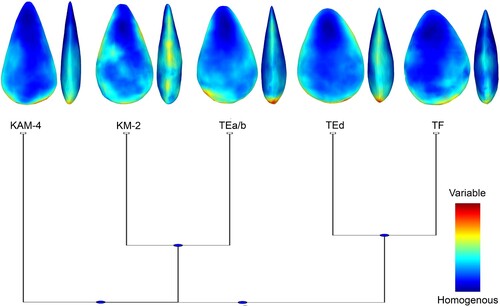
Table 6. Results of ANOVA tests of PC1 And PC3 by assemblage.
Shape variability was calculated as the mean distance in Euclidean shape space between homologous landmark points in the group and the group centroid (Herzlinger & Goren-Inbar, Citation2020). As it is a mean value, its magnitude is unaffected by sample size. Wilcoxon Rank Sum tests were used to determine significant differences between the groups in intra-assemblage variability. The results show that Khall Amayshan 4B and Khabb Musayyib were the least variable, with no significant difference between them (rank sum = 266, p = 0.59) (). This supports the observation in Groucutt et al. (Citation2021) that the Khall Amayshan 4B handaxes have consistently pointed forms. Khabb Musayyib (the more heterogenous of the two west Nefud assemblages) was significantly less variable than both Tabun Ea/b (rank sum = 738, p = 0.01) and Tabun Ed (rank sum = 681, p < 0.01), these latter two being the most variable assemblages (). Tabun Ed was also significantly more variable than Tabun F (rank sum = 666, p < 0.01).
Table 7. Intra-assemblage variability as measured by distance in Euclidean shape space of individual specimens to the group centroid.
Discussion
The Tabun cave, Khall Amayshan 4B, and Khabb Musayyib handaxes run the gamut of handaxe variation from some of the most pointed () to some of the most rounded specimens () known anywhere in the Acheulean world. The most variable assemblages were all made of one material, suggesting rock type was not a significant determinant of form. While cobble-made handaxes tended to have thicker butts than those made on slabs and flakes, there was no effect of blank type on the roundedness or pointedness of handaxes. Hominins were not altering handaxe shape to control for size, with no significant effects of weight on Principal Components. In agreement with the finding that the Tabun handaxes were generally produced off-site (Shimelmitz et al., Citation2017), our analysis showed they had undergone differential resharpening . Despite this, there was no effect of reduction intensity on shape. That these factors do not have strong effects on form indicates the extremes of shape seen in this sample were intentional rather than incidental.
Two broad patterns in shape variation are evident from the data analyzed here. The first is that the Acheulo-Yabrudian assemblages of Tabun Ed and Tabun Ea/b are significantly more variable than the late Acheulean Tabun F assemblage. The second is that the Khall Amayshan 4B and Khabb Musayyib assemblages are significantly more homogenous than the assemblage to which they are overall most similar in shape, Tabun Ea/b. The Khall Amayshan 4B and Khabb Musayyib assemblages therefore appear to form a subset of the wide variation seen in Tabun Ea/b, and likely also a subset of the wide variation seen in another west Nefud assemblage - An Nasim (Scerri et al., Citation2021). The Azraq oasis in central Jordan provides something of a bridge between the Nefud and Levantine assemblages, like Tabun and An Nasim it has handaxe diverse shapes ranging from very pointed to very rounded (Copeland et al., Citation1989; Rollefson et al., Citation2006). Acheulean occupation at Azraq is estimated to date to MIS9-8 (Ames & Cordova, Citation2015), with the Wadi Sirhan corridor offering a string of palaeolakes that would have connected Azraq to the Nefud during wet climatic phases (Breeze et al., Citation2016).
High levels of variability are seen in the early Acheulean Levantine assemblage of 'Ubeidiya, when analysed according to the same protocols as here (Herzlinger et al., Citation2021). However, this is probably due to the 'Ubeidiya bifaces being asymmetrical and irregular in planform and section in comparison to younger Acheulean assemblages from the Levant (Herzlinger et al., Citation2021; Saragusti et al., Citation2005), perhaps due to a relative lack of control over biface form in comparison to the later knappers. When juxtaposed against the homogeneity of penecontemporaneous assemblages like Khall Amayshan 4B and Khabb Musayyib, the heterogeneity in the Tabun Acheulo-Yabrudian assemblages appears to be behaviourally meaningful. It is found not only here, but in the late stages of the Acheulean elsewhere in southwest Asia such as Jaljulia to the south of Tabun (Muller et al., Citation2022) and Nadaouiyeh Ain Askar at the El Kowm oasis in central Syria (Jagher, Citation2016), as well as final Acheulean sites further afield such as Broom in southern Britain (Hosfield & Chambers, Citation2009). We offer two non-mutually exclusive explanations as to what the meaning of such diversity may be.
Handaxe heterogeneity may reflect functional differences for the different forms. The Khall Amayshan 4B (N = 78) and Khabb Musayyib (N = 46) assemblages have far fewer handaxes than either nearby An Nasim (N = 286) or any of the Tabun layers. All handaxes were collected from the exposed palaeolake surfaces and there is a low likelihood of significant buried assemblages remaining undiscovered at these sites. Khall Amayshan 4B and Khabb Musayyib may represent shorter-term occupations in which a more restricted ranges of activities were carried out than at long term home-base sites like Tabun. The diversity of handaxe materials and the paucity of unretouched flakes suggests high mobility in the Khabb Musayyib occupation with some of the handaxes manufactured elsewhere. Biface thinning flakes were recovered from both Khall Amayshan 4B and Khabb Musayyib, but since the material at Khall Amayshan was seemingly transported over 10 km, early stage handaxe reduction likely took place off-site. The lack of evidence for differential resharpening at either Khall Amayshan 4B or Khabb Musayyib points to a specific task for biface use at these sites.
A functional analysis of Acheulo-Yabrudian handaxes from Revadim and Jaljulia showed that pointed handaxes tended to be used in a longitudinal sawing motion on softer materials like flesh, while rounded handaxes tended to be used in a more transverse slicing motion on harder materials like wood (Zupancich et al., Citation2021). The pointed handaxes would also presumably be better at piercing hide than rounded ones. The small size of handaxes at the end of the Acheulean in southwest Asia (Gilead, Citation1970) may reflect burgeoning functional specialization alongside the increased prevalence of other small tools (Jagher, Citation2016; Shimelmitz et al., Citation2021). There is some evidence from the Acheulo-Yabrudian of tailoring tool types to different functional and mobility requirements. For example, handaxes were generally produced off-site at Tabun and resharpened, while the blades which define the Amudian facies of the Acheulo-Yabrudian were produced on-site (Shimelmitz et al., Citation2017), and at Qesem Cave the latter had short use-lives in the butchery of fallow deer (Lemorini et al., Citation2006). It has been suggested that scrapers, indicative of the Yabrudian facies of the Acheulo-Yabrudian, are associated with pointed handaxes at Tabun (McPherron, Citation2003). The link may be functional with pointed handaxes having a more prominent role for butchery in the Yabrudian, whereas in the Amudian blades took on that role. In the case of Khall Amayshan and Khabb Musayyib, the presence of palaeolakes would have attracted game from the surrounding relatively arid landscape, making these prime hunting locations and butchery a likely function for the pointed handaxes from these sites.
Particular handaxe forms may additionally reflect normative styles of different hominin populations (Shipton et al., Citation2021), with Khall Amayshan 4B and Khabb Musayyib manufactured by one such population, whereas sites like Tabun, as well as An Nasim with its particularly thick palaeolake deposit (Scerri et al., Citation2021), may have been longer term refugia visited by multiple groups. At Khall Amayshan (and probably also Khabb Musayyib), occupation correlates with interglacial wet phases, in contrast to the woodland zone of the Levant where there was less extreme environmental oscillation and thus more continuous hominin occupation. Normative handaxe styles seem to explain the succession of handaxe types in Britain with repeated colonization from continental Europe and subsequent abandonment by Acheulean populations across interglacial to glacial cycles (Shipton & White, Citation2020). The greening to drying cycles of northern Arabia represent a parallel case of distinctive lithic signatures for successive hominin dispersals (Groucutt et al., Citation2021).
Whether heterogeneity in handaxe styles is the result of drift between separate groups or societal meaning in tool form is difficult to discern. However, the fact that heterogeneity was maintained over the course of the Acheulo-Yabrudian, with the different forms repeatedly occurring points to the latter possibility. The Acheulo-Yabrudian is a regionally distinct industry at the end of the Acheulean that warrants a particular etic label (Barkai & Gopher, Citation2013), and it is possible that this technocomplex would also have had an emic distinction from neighbouring cultural entities. Even the facies within the Acheulo-Yabrudian may be culturally significant with a geographical pattern of Amudian assemblages restricted to the core region of the southern Levant, Yabrudian assemblages in this area and to the northeast, and the Acheulean facies in the southern Levant and further to the southwest (Shimelmitz et al., Citation2021), perhaps including the Nefud sites. Shaped bifaces are a key distinguishing feature of other technocomplexes, such as the late Neanderthal regional Middle Palaeolithic variants (Ruebens, Citation2013). Just as with cutting tool shape variants in modern people (Larick, Citation1991; Wiessner, Citation1983), particular handaxe forms may have manifested social identities at the end of the Acheulean in southwest Asia.
Acknowledgements
We thank the Heritage Commission, Saudi Ministry of Culture, for supporting our fieldwork in Saudi Arabia. Access to the Tabun specimens was given by the Institute of Archaeology, the Cambridge Museum of Archaeology and Anthropology, and the British Museum. Funding for analysis provided by the UK Arts and Humanities Research Council, project code: WT661676 RF210349.
Disclosure statement
No potential conflict of interest was reported by the author(s).
Additional information
Notes on contributors
Ceri Shipton
Ceri Shipton, Ph.D., is lecturer in the Palaeolithic at the Institute of Archaeology, University College London.
Huw S. Groucutt
Huw S. Groucutt, Ph.D., is lecturer in Mediterranean Prehistory at the University of Malta and independent group leader of the Max Planck Society’s Extreme Events Research Group.
Eleanor Scerri
Eleanor Scerri, Ph.D., is Lise Meitner Professor at the Max Planck Institute of Geoanthropology (MPI-GEA), leading the Pan African Evolution Research Group (Pan-Ev).
Michael D. Petraglia
Michael D. Petraglia, Ph.D., is Director of the Australian Research Centre for Human Evolution at Griffith University.
References
- Agam, A., Wilson, L., Gopher, A., & Barkai, R. (2020). Flint type analysis of bifaces from Acheulo-Yabrudian Qesem Cave (Israel) suggests an older Acheulian origin. Journal of Paleolithic Archaeology, 3(4), 719–754. https://doi.org/10.1007/s41982-019-00038-0
- Ames, C. J., & Cordova, C. E. (2015). Middle and Late Pleistocene landscape evolution at the Druze Marsh Site in northeast Jordan: implications for population continuity and hominin dispersal. Geoarchaeology, 30(4), 307–329. https://doi.org/10.1002/gea.21516
- Barkai, R., & Gopher, A. (2013). Cultural and biological transformations in the Middle Pleistocene Levant: a view from Qesem Cave, Israel. In T. Akazawa, Y. Nishiaki, & K. Aoki (Eds.), Dynamics of Learning in Neanderthals and Modern Humans Vol 1 (pp. 115–137). Springer.
- Breeze, P. S., Groucutt, H. S., Drake, N. A., Louys, J., Scerri, E. M., Armitage, S. J., Zalmout, I. S., Memesh, A. M., Haptari, M. A., & Soubhi, S. A. (2017). Prehistory and palaeoenvironments of the western Nefud Desert, Saudi Arabia. Archaeological Research in Asia, 10, 1–16. https://doi.org/10.1016/j.ara.2017.02.002
- Breeze, P. S., Groucutt, H. S., Drake, N. A., White, T. S., Jennings, R. P., & Petraglia, M. D. (2016). Palaeohydrological corridors for hominin dispersals in the Middle East∼ 250–70,000 years ago. Quaternary Science Reviews, 144, 155–185. https://doi.org/10.1016/j.quascirev.2016.05.012
- Copeland, L., Hours, F., & Series, B. I. (1989). The Lower and Middle Paleolithic of the Desert Wadis in the Azraq Basin Survey Results, 1982-1986. The Hammer on the Rock. Studies in the Early Palaeolithic of Azraq, Jordan, 540, 65–152.
- Crompton, R. H., & Gowlett, J. A. (1993). Allometry and multidimensional form in Acheulean bifaces from Kilombe, Kenya. Journal of Human Evolution, 25(3), 175–199. https://doi.org/10.1006/jhev.1993.1043
- Eren, M. I., Roos, C. I., Story, B. A., von Cramon-Taubadel, N., & Lycett, S. J. (2014). The role of raw material differences in stone tool shape variation: an experimental assessment. Journal of Archaeological Science, 49, 472–487. https://doi.org/10.1016/j.jas.2014.05.034
- García-Medrano, P., Ollé, A., Ashton, N., & Roberts, M. B. (2018). The mental template in handaxe manufacture: New insights into Acheulean lithic technological behavior at Boxgrove, Sussex, UK. Journal of Archaeological Method and Theory, 1–27. https://doi.org/10.1007/s10816-018-9376-0
- Garcia-Medrano, P., Shipton, C., White, M., & Ashton, N. (2022). Acheulean diversity in britain (MIS 15-MIS11): from the standardization to the regionalization of technology. Frontiers in Earth Science, 10, 917207. https://doi.org/10.3389/feart.2022.917207
- Gilead, D. (1970). Handaxe industries in Israel and the Near East. World Archaeology, 2(1), 1–11. https://doi.org/10.1080/00438243.1970.9979459
- Gisis, I., & Ronen, A. (2006). Bifaces from the Acheulian and Yabrudian layers of Tabun Cave, Israel. In N Goren-Inbar & G Sharon (Eds.), Axe Age: Acheulian Toolmaking from Quarry to Discard (pp. 137–154). Equinox.
- Gowlett, J., & Crompton, R. (1994). Kariandusi: Acheulean morphology and the question of allometry. The African Archaeological Review, 12(1), 3–42. https://doi.org/10.1007/BF01953037
- Groucutt, H. S., Scerri, E. M., Amor, K., Shipton, C., Jennings, R. P., Parton, A., Clark-Balzan, L., Alsharekh, A., & Petraglia, M. D. (2017). Middle Palaeolithic raw material procurement and early stage reduction at Jubbah, Saudi Arabia. Archaeological Research in Asia, 9, 44–62. https://doi.org/10.1016/j.ara.2017.01.003
- Groucutt, H. S., White, T. S., Scerri, E. M., Andrieux, E., Clark-Wilson, R., Breeze, P. S., Armitage, S. J., Stewart, M., Drake, N., Louys, J., Price, G. J., Duval, M., Parton, A., Candy, I., Carleton, W., Shipton, C., Jennings, R., Zahir, M., Blinkhorn, J., … Petraglia, M. (2021). Multiple hominin dispersals into Southwest Asia over the past 400,000 years. Nature, 597(7876), 376–380. https://doi.org/10.1038/s41586-021-03863-y
- Herzlinger, G., & Goren-Inbar, N. (2020). Beyond a cutting edge: A morpho-technological analysis of acheulian handaxes and cleavers from gesher benot Ya‘aqov, israel. Journal of Paleolithic Archaeology, 3(1), 33–58. https://doi.org/10.1007/s41982-019-00033-5
- Herzlinger, G., Goren-Inbar, N., & Grosman, L. (2017). A new method for 3D geometric morphometric shape analysis: The case study of handaxe knapping skill. Journal of Archaeological Science: Reports, 14, 163–173. https://doi.org/10.1016/j.jasrep.2017.05.013
- Herzlinger, G., & Grosman, L. (2018). AGMT3-D: A software for 3-D landmarks-based geometric morphometric shape analysis of archaeological artifacts. PloS one, 13(11), e0207890. https://doi.org/10.1371/journal.pone.0207890
- Herzlinger, G., Varanda, A., Deschamps, M., Brenet, M., Lopez-Tascón, C., & Goren-Inbar, N. (2021). Reevaluation of the Classification Scheme of the Acheulian in the Levant-50 Years Later: A Morpho-Technological Analysis of Handaxe Variability. PaleoAnthropology, 23–84. https://doi.org/10.48738/2021.iss1.70
- Hosfield, R., & Chambers, J. (2009). Genuine diversity? The Broom biface assemblage. Proceedings of the Prehistoric Society, 75, 65–100. https://doi.org/10.1017/S0079497X0000030X
- Jagher, R. (2016). Nadaouiyeh Aïn askar, an example of upper Acheulean variability in the Levant. Quaternary International, 411, 44–58. https://doi.org/10.1016/j.quaint.2016.02.006
- Jones, P. R. (1979). Effects of raw materials on biface manufacture. Science, 204(4395), 835–836. https://doi.org/10.1126/science.204.4395.835
- Kuhn, S. L., Shimelmitz, R., & Clark, A. E. (2017). The road to differentiated land use and domestic space in the Middle Pleistocene of southwestern Asia. In M. Pope, J. McNabb, & C. Gamble (Eds.), Crossing the human threshold (pp. 43–59). Routledge.
- Larick, R. (1991). Warriors and blacksmiths: mediating ethnicity in East African spears. Journal of Anthropological Archaeology, 10(4), 299–331. https://doi.org/10.1016/0278-4165(91)90005-I
- Leakey, M., & Roe, D. (1995). Olduvai gorge: Volume 5, Excavations in beds III, IV and the masek beds (Vol. 5). Cambridge University Press.
- Lemorini, C., Stiner, M. C., Gopher, A., Shimelmitz, R., & Barkai, R. (2006). Use-wear analysis of an amudian laminar assemblage from the acheuleo-yabrudian of qesem cave, israel. Journal of Archaeological Science, 33(7), 921–934. https://doi.org/10.1016/j.jas.2005.10.019
- Li, H., Kuman, K., Leader, G. M., & Couzens, R. (2018). Handaxes in South Africa: Two case studies in the early and later Acheulean. Quaternary International, 480, 29–42. https://doi.org/10.1016/j.quaint.2016.08.025
- Lycett, S. J., von Cramon-Taubadel, N., & Foley, R. A. (2006). A crossbeam co-ordinate caliper for the morphometric analysis of lithic nuclei: a description, test and empirical examples of application. Journal of Archaeological Science, 33(6), 847–861. https://doi.org/10.1016/j.jas.2005.10.014
- Matskevich, Z. (2006). Cleavers in the levantine late Acheulian the case of Tabun cave. In N. Goren-Inbar, & G. Sharon (Eds.), Axe age: Acheulian tool-making from quarry to discard (pp. 335–346). Equinox.
- McPherron, S. P. (2003). Technological and typological variability in the bifaces from Tabun Cave, Israel. In M. Soressi & H. L. Dibble (Eds.), Multiple Approaches to the Study of Bifacial Technology (pp. 55–75). University of Pennsylvania Museum Press.
- McPherron, S. P. (2006). What typology can tell us about Acheulian handaxe production. In N. Goren-Inbar, & G. Sharon (Eds.), Axe age: Acheulian tool-making from quarry to discard (pp. 267–285). Equinox.
- Mercier, N., & Valladas, H. (2003). Reassessment of TL age estimates of burnt flints from the Paleolithic site of Tabun Cave, Israel. Journal of Human Evolution, 45(5), 401–409. https://doi.org/10.1016/j.jhevol.2003.09.004
- Mercier, N., Valladas, H., Froget, L., Joron, J.-L., & Ronen, A. (2000). Datation par thermoluminescence de la base du gisement paléolithique de Tabun (Mont Carmel, Israël). Comptes Rendus de l'Académie des Sciences-Series IIA-Earth and Planetary Science, 330(10), 731–738. https://doi.org/10.1016/S1251-8050(00)00193-2
- Muller, A., Barkai, R., Shemer, M., & Grosman, L. (2022). 3D morphology of handaxes from late Acheulean Jaljulia: A flexible reduction strategy in the Lower Paleolithic Levant. Archaeological and Anthropological Sciences, 14(10), 1–20. https://doi.org/10.1007/s12520-022-01671-7
- Noll, M. P. (2000). Components of Acheulean lithic assemblage variability at Olorgesailie, Kenya. University of Illinois at Urbana-Champaign.
- Nowell, A. (2002). Coincidental factors of handaxe morphology. Behavioral and Brain Sciences, 25(03), 413–414. https://doi.org/10.1017/S0140525X02330073
- Roberts, M. B., Parfitt, S. A., Pope, M., Wenban-Smith, F., Macphail, R., Locker, A., & Stewart, J.. (1997). Proceedings of the Prehistoric Society, 63, 303–358. https://doi.org/10.1017/S0079497X00002474
- Rollefson, G. O., Quintero, L. A., & Wilke, P. J. (2006). Late Acheulian variability in the southern Levant: a contrast of the western and eastern margins of the Levantine Corridor. Near Eastern Archaeology, 69(2), 61–72. https://doi.org/10.1086/NEA25067649
- Ruebens, K. (2013). Regional behaviour among late Neanderthal groups in Western Europe: a comparative assessment of late Middle Palaeolithic bifacial tool variability. Journal of Human Evolution, 65(4), 341–362. https://doi.org/10.1016/j.jhevol.2013.06.009
- Saragusti, I., Karasik, A., Sharon, I., & Smilansky, U. (2005). Quantitative analysis of shape attributes based on contours and section profiles in artifact analysis. Journal of Archaeological Science, 32(6), 841–853. https://doi.org/10.1016/j.jas.2005.01.002
- Scerri, E. M., Breeze, P. S., Parton, A., Groucutt, H. S., White, T. S., Stimpson, C., Clark-Balzan, L., Jennings, R., Alsharekh, A., & Petraglia, M. D. (2015). Middle to late Pleistocene human habitation in the western Nefud desert, Saudi Arabia. Quaternary International, 382, 200–214. https://doi.org/10.1016/j.quaint.2014.09.036
- Scerri, E. M., Frouin, M., Breeze, P. S., Armitage, S. J., Candy, I., Groucutt, H. S., Drake, N., Parton, A., White, T. S., & Alsharekh, A. M. (2021). The expansion of Acheulean hominins into the Nefud Desert of Arabia. Scientific Reports, 11(1), 1–10. https://doi.org/10.1038/s41598-020-79139-8
- Shimelmitz, R. (2015). The recycling of flint throughout the Lower and Middle Paleolithic sequence of Tabun Cave, Israel. Quaternary International, 361, 34–45. https://doi.org/10.1016/j.quaint.2014.08.033
- Shimelmitz, R., Bisson, M., Weinstein-Evron, M., & Kuhn, S. L. (2017). Handaxe manufacture and re-sharpening throughout the Lower Paleolithic sequence of Tabun Cave. Quaternary International, 428, 118–131. https://doi.org/10.1016/j.quaint.2015.12.076
- Shimelmitz, R., Kuhn, S. L., Bisson, M., & Weinstein-Evron, M. (2021). The end of the Acheulo-Yabrudian and the Lower Paleolithic in the Levant: A view from the “transitional” unit X of Tabun Cave, Israel. Archaeological and Anthropological Sciences, 13(4), 1–26. https://doi.org/10.1007/s12520-021-01304-5
- Shimelmitz, R., Kuhn, S. L., Jelinek, A. J., Ronen, A., Clark, A. E., & Weinstein-Evron, M. (2014). Fire at will’: The emergence of habitual fire use 350,000 years ago. Journal of Human Evolution, 77, 196–203. https://doi.org/10.1016/j.jhevol.2014.07.005
- Shimelmitz, R., Kuhn, S. L., & Weinstein-Evron, M. (2020). The evolution of raw material procurement strategies: A view from the deep sequence of Tabun Cave, Israel. Journal of Human Evolution, 143, 102787. https://doi.org/10.1016/j.jhevol.2020.102787
- Shipton, C. (2008). Cognition and sociality in the Acheulean. University of Cambridge].
- Shipton, C. (2013). A Million Years of Hominin Sociality and Cognition: Acheulean Bifaces in the Hunsgi-Baichbal Valley, India. Archaeopress.
- Shipton, C. (2016). Hierarchical organization in the Acheulean to middle palaeolithic transition at Bhimbetka, India. Cambridge Archaeological Journal, 26(4), 601–618. https://doi.org/10.1017/S095977431600041X
- Shipton, C. (2018). Biface knapping skill in the east African acheulean: Progressive trends and random walks. African Archaeological Review, 35(1), 107–131. https://doi.org/10.1007/s10437-018-9287-1
- Shipton, C. (2020). The unity of Acheulean culture. In H. Groucutt (Ed.), Culture History and Convergent Evolution: Can we detect populations in prehistory? (pp. 13–27). Springer.
- Shipton, C., & Clarkson, C. (2015a). Flake scar density and handaxe reduction intensity. Journal of Archaeological Science: Reports, 2, 169–175. https://doi.org/10.1016/j.jasrep.2015.01.013
- Shipton, C., & Clarkson, C. (2015b). Handaxe reduction and its influence on shape: An experimental test and archaeological case study. Journal of Archaeological Science: Reports, 3, 408–419. https://doi.org/10.1016/j.jasrep.2015.06.029
- Shipton, C., Nielsen, M., & DiVincenzo, F. (2021). The Acheulean origins of normativity. In A. Killin, & S. Hermansson (Eds.), Explorations in Archaeology and Philosophy (pp. 197–212). Springer.
- Shipton, C., & White, M. J. (2020). Handaxe types, colonization waves, and social norms in the British Acheulean. Journal of Archaeological Science: Reports, 102352.
- White, M. J. (1998). On the significance of Acheulean biface variability in southern Britain. Proceedings of the Prehistoric Society, 64, 15–44. https://doi.org/10.1017/S0079497X00002164
- White, M. J. (2006). Axeing cleavers: Reflections on broad-tipped large cutting tools in the British earlier Paleolithic. In N. Goren-Inbar, & G. Sharon (Eds.), Axe age: Acheulian tool-making from quarry to discard (pp. 365–386). Equinox.
- White, M. J., Ashton, N., & Bridgland, D. (2019). Twisted handaxes in Middle Pleistocene Britain and their implications for regional-scale cultural variation and the deep history of Acheulean hominin groups. Proceedings of the Prehistoric Society, 1–21. https://doi.org/10.1017/ppr.2019.1
- Wiessner, P. (1983). Style and social information in Kalahari San projectile points. American Antiquity, 48(2), 253–276. https://doi.org/10.2307/280450
- Wynn, T. (2000). Symmetry and the evolution of the modular linguistic mind. In P. Carruthers, & A. Chamberlain (Eds.), Evolution and the human mind: modularity, language and meta-cognition (pp. 113–139). Cambridge University Press.
- Wynn, T., & Gowlett, J. (2018). The handaxe reconsidered. Evolutionary Anthropology: Issues, News, and Reviews, 27(1), 21–29. https://doi.org/10.1002/evan.21552
- Zupancich, A., Shemer, M., & Barkai, R. (2021). Biface use in the Lower Paleolithic levant: First insights from late acheulean Revadim and jaljulia (Israel). Journal of Archaeological Science: Reports, 36, 102877. doi:10.1016/j.jasrep.2021.102877

